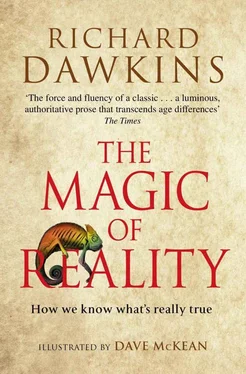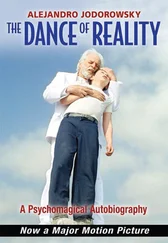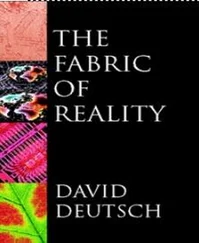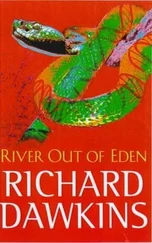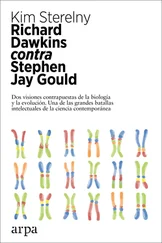5. WHY DO WE HAVE NIGHT AND DAY, WINTER AND SUMMER?

OUR LIVES ARE dominated by two great rhythms, one much slower than the other. The fast one is the daily alternation between dark and light, which repeats every 24 hours, and the slow one is the yearly alternation between winter and summer, which has a repeat time of a little over 365 days. Not surprisingly, both rhythms have spawned myths. The day–night cycle especially is rich in myth because of the dramatic way the sun seems to move from east to west. Several peoples even saw the sun as a golden chariot, driven by a god across the sky.
The aboriginal peoples of Australia were isolated on their island continent for at least 40,000 years, and they have some of the oldest myths in the world. These are mostly set in a mysterious age called the Dreamtime, when the world began and was peopled by animals and a race of giant ancestors. Different tribes of aborigines have different myths of the Dreamtime. This first one comes from a tribe who live in the Flinders Ranges of southern Australia.
During the Dreamtime, two lizards were friends. One was a goanna (the Australian name for a large monitor lizard) and the other a gecko (a delightful little lizard with suction pads on its feet, with which it climbs up vertical surfaces). The friends discovered that some other friends of theirs had been massacred by the ‘sun-woman’ and her pack of yellow dingo dogs.
Furious with the sun-woman, the big goanna hurled his boomerang at her and knocked her out of the sky. The sun vanished over the western horizon and the world was plunged into darkness. The two lizards panicked and tried desperately to knock the sun back into the sky, to restore the light. The goanna took another boomerang and hurled it westwards, to where the sun had disappeared. As you may know, boomerangs are remarkable weapons that come back to the thrower, so the lizards hoped that the boomerang would hook the sun back up into the sky. It didn’t. They then tried throwing boomerangs in all directions, in a vague hope of retrieving the sun. Finally, goanna lizard had only one boomerang left, and in desperation he threw it to the east, the opposite direction from where the sun had disappeared. This time, when it returned, it brought the sun with it. Ever since then, the sun has repeated the same pattern of disappearing in the west and reappearing in the east.
Many myths and legends from all around the world have the same odd feature: a particular incident happens once, and then, for reasons never explained, the same thing goes on happening again and again for ever.
Here’s another aboriginal myth, this time from southeastern Australia. Someone threw the egg of an emu (a sort of Australian ostrich) up into the sky. The sun hatched out of the egg and set fire to a pile of kindling wood which happened (for some reason) to be up there. The sky god noticed that the light was useful to men, and he told his servants to go out every night from then on, to put enough firewood in the sky to light up the next day.
The longer cycle of the seasons is also the subject of myths all around the world. Native North American myths, like many others, often have animal characters. In this one, from the Tahltan people of western Canada, there was a quarrel between Porcupine and Beaver over how long the seasons ought to be. Porcupine wanted winter to last five months, so he held up his five fingers. But Beaver wanted winter to last for more months than that – the number of grooves in his tail. Porcupine was angry and insisted on an even shorter winter. He dramatically bit off his thumb and held up the remaining four fingers. And ever since then winter has lasted four months.
I find this a rather disappointing myth, because it already assumes that there will be a winter and summer, and explains only how many months each will last. The Greek myth of Persephone is better in this respect at least.
Persephone was the daughter of the chief god Zeus. Her mother was Demeter, fertility goddess of the Earth and the harvest. Persephone was greatly loved by Demeter, whom she helped in looking after the crops. But Hades, god of the underworld, home of the dead, loved Persephone too. One day, when she was playing in a flowery meadow, a great chasm opened up and Hades appeared from below in his chariot; seizing Persephone, he carried her down and made her the queen of his dark, underground kingdom. Demeter was so grief-stricken at the loss of her beloved daughter that she stopped the plants growing, and people began to starve. Eventually Zeus sent Hermes, the gods’ messenger, down to the underworld to fetch Persephone back up to the land of the living and the light. Unfortunately, it turned out that Persephone had eaten six pomegranate seeds while in the underworld, and this meant (by the kind of logic we have become used to where myths are concerned) that she had to go back to the underworld for six months (one for each pomegranate seed) in every year. So Persephone lives above ground for part of the year, beginning in the spring and continuing through summer. During this time, plants flourish and all is merry. But during the winter, when she has to return to Hades because she ate those pesky pomegranate seeds, the ground is cold and barren and nothing grows.
What really changes day to night, winter to summer?
Whenever things change rhythmically with great precision, scientists suspect that either something is swinging like a pendulum or something is rotating: going round and round. In the case of our daily and seasonal rhythms, it’s the second. The seasonal rhythm is explained by the yearly orbiting of the Earth around the sun, at a distance of about 93 million miles. And the daily rhythm is explained by the Earth’s spinning round and round like a top.
The illusion that the sun moves across the sky is just that – an illusion. It’s the illusion of relative movement . You will have met the same kind of illusion often enough. You are in a train, standing at a station next to another train. Suddenly you seem to start ‘moving’. But then you realize that you aren’t actually moving at all. It is the second train that is moving, in the opposite direction. I remember being intrigued by the illusion the first time I travelled in a train. (I must have been very young, because I also remember another thing I got wrong on that first train journey. While we were waiting on the platform, my parents kept saying things like ‘Our train will be coming soon’ and ‘Here comes our train’, and then ‘This is our train now’. I was thrilled to get on it because this was our train. I walked up and down the corridor, marvelling at everything, and very proud because I thought we owned every bit of it.)
The illusion of relative movement works the other way, too. You think the other train has moved, only to discover that it is your own train that is moving. It can be hard to tell the difference between apparent movement and real movement. It’s easy if your train starts with a jolt, of course, but not if your train moves very smoothly. When your train overtakes a slightly slower train, you can sometimes fool yourself into thinking your train is still and the other train is moving slowly backwards.
It’s the same with the sun and the Earth. The sun is not really moving across our sky from east to west. What is really happening is that the Earth, like almost everything in the universe (including the sun itself, by the way, but we can ignore that), is spinning round and round. Technically we say the Earth is spinning on its ‘axis’: you can think of the axis as a bit like an axle running right through the globe from North Pole to South Pole. The sun stays almost still relative to the Earth (not relative to other things in the universe, but I am just going to write about how it seems to us here, on Earth). We spin too smoothly to feel the movement, and the air we breathe spins with us. If it didn’t, we would feel it as a mighty rushing wind, because we spin at a thousand miles an hour. At least, that is the spin speed at the equator; obviously we spin more slowly as we approach the North or South Pole because the ground we’re standing on has less far to go to complete a circuit round the axis. Since we can’t feel the spinning of the planet, and the air spins with us, it’s like the case of the two trains. The only way we can tell we are moving is to look at objects that are not spinning with us: objects like the stars and the sun. What we see is the relative movement, and – just as with the trains – it looks as though we are standing still and the stars and the sun are moving across our sky.
Читать дальше
